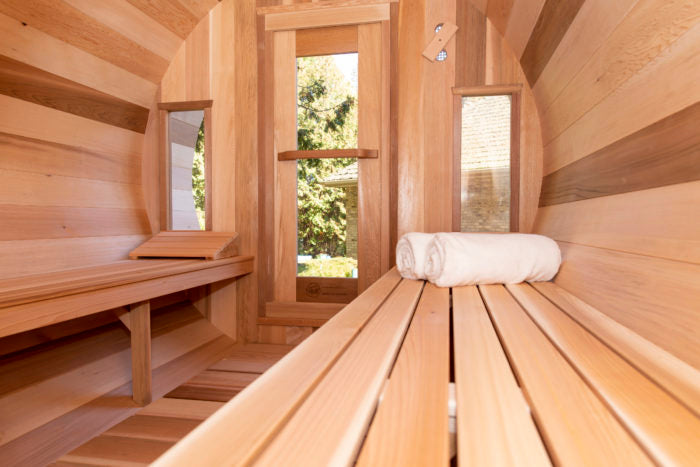Traditional Sauna Fundamentals Explained
Traditional Sauna Fundamentals Explained
Blog Article
More About Traditional Sauna
Table of ContentsAbout Traditional SaunaThe 10-Second Trick For Traditional SaunaTraditional Sauna Can Be Fun For EveryoneThe 10-Minute Rule for Traditional Sauna
The majority of the weight lost in a sauna is water loss and is re-gained upon rehydrating. Without a doubt sauna can be an important part of a healthy and balanced weight loss program. To look at the distinctions between conventional and IR saunas, I will separate these right into proven, theoretical, and produced differences.Thus, the most popular point in the saunawhich goes to the ceiling straight above the sauna heateris typically between 185 and 190 F. Traditional Sauna. Claims that a traditional sauna goes beyond 200 F is merely not real and not applicable for electric saunas sold in the US. The temperature level for a far-infrared sauna is normally established in between 120 and 140 F; however, unlike the typical sauna, the goal in and IR area is not to attain a high temperature level
Because of this, the temperature level distinction is practically unimportant, because extreme sweating leads to both sauna types, however the approach of warming the body is different. In an IR sauna the bather will certainly really feel warm and will sweat a lot, but at much reduced temperatures. Hence, if the objective is to spend longer time periods in the sauna, the IR sauna is an excellent option.

Traditional Sauna Things To Know Before You Get This
When the heat is attained, the elements cycle on and off to preserve the high temperature level. Most conventional sauna customers take pleasure in putting water over the rocks to produce heavy steam to increase sauna humidity levels. The benefits of pouring water over the rocks consist of: making the space more comfy, dampening the nasal flows, and permitting the use of aromatherapy by mixing vital oils with the water.
In a far-infrared sauna, the warmth waves permeate the body to properly warm the body and raise the body core temperature level. To attain this raised temperature level, Far-infrared emitters develop infrared power which is close to the very same wavelength as that which the body normally emitsoften described as the "Crucial Array" of 7 to 14 microns), so the power is well gotten by the body.
When the power gets in the body, it creates the body temperature level to boost and ultimately results in sweating. In an infrared sauna it is very important for the emitters/heaters to stay on practically continuously. Considering that there is no mass of rocks to keep heat, the sauna will certainly cool down if the emitters closed off.
As pointed out above, the sauna bather in an infrared room intends to position himself before running emitters to get optimal benefit from the warm. The heating time for both spaces can be very different, depending on just how the spaces are used. For a traditional sauna, a bather should permit 30-40 minutes for the area to accomplish a preferred temperature and to properly pre-heat the rocks.
Some Of Traditional Sauna
A well built sauna will commonly achieve a temperature of 150-160 F in regarding 30-40 mins. For hotter temperature levels, the area might need to warm for a longer duration.
To some, 15 mins was "wasted" while the infrared energy heated up the wood panels as opposed to heating up a body, while others locate a pre-heated space to be more comfortable and believe an elevated starting temperature level is necessary to begin perspiring. The length of recommended use additional hints for every space is about the same (10-15 minutes per session); nevertheless, because of the reduced air temperatures and the capacity to feel the effects of infrared heat faster than a conventional sauna, it is not unusual for a person to spend a total of 20-30 minutes in an check out here infrared sauna.
Conventional saunas tend to be bigger (therefore use even more power) than infrared saunas, although standard saunas are definitely offered in one and 2 person dimensions. For a two-person typical sauna, 5x6 or 5x7 size is most preferred. The leading bench can easily seat two or 3 individuals and is additionally enough time to rest throughout the sauna session.


The typical expense per kWH of electricity in the U.S. is about $0.11, so a 4.5 kW heating unit will certainly cost approximately $.50 to compete one hour, if the heater runs continuously for one hour. Commonly a sauna heating unit will certainly run for 75% of the very first hour and 50% of succeeding hours on because the aspects cycle once the set temperature level is accomplished.
Unknown Facts About Traditional Sauna
A two individual far-infrared room is normally literally smaller sized than a standard sauna, frequently regarding 4' x 4' or smaller. The IR heating unit is commonly 1.5-1.7 kW using a 120 volt 15 amp plug-in service. Since the room can be utilized earlier than a sauna area, we will certainly think the area is used for to of an hour including warm up time.
There is a rarely talked about difference in the social experience between the two spaces. While our culture has lost some of official website the social advantage of the conventional sauna experience, it can be very socially satisfying. From family members time in the sauna, to heart-felt discussions with better halves, to sauna partiesthe traditional sauna experience can lead to intimate socializing.
The majority of greater end infrared spaces consist of colored light therapy, audio systems and full-glass fronts. The dimension of a lot of spaces enable 2 people to comfortably make use of the room, while some designs might enable a 3rd or fourth person to utilize the room. Personalized infrared spaces are also available, with room dimensions offered up to 7' x 8' x 7' high.
Report this page